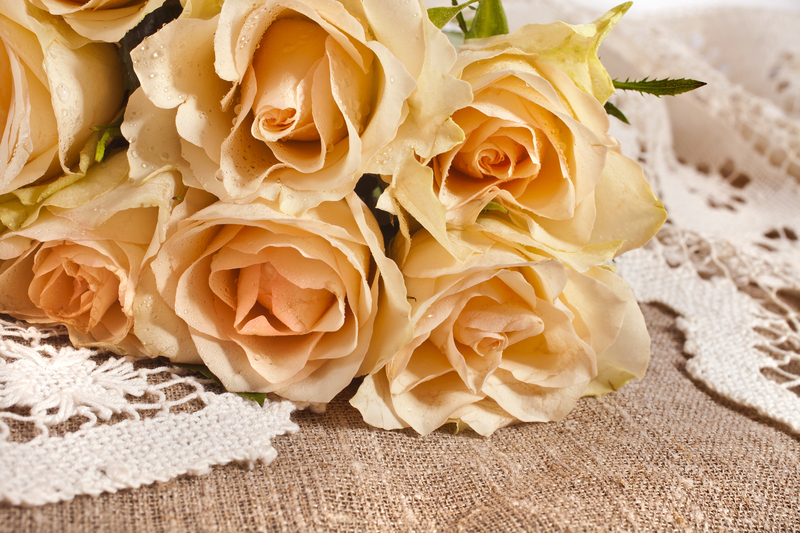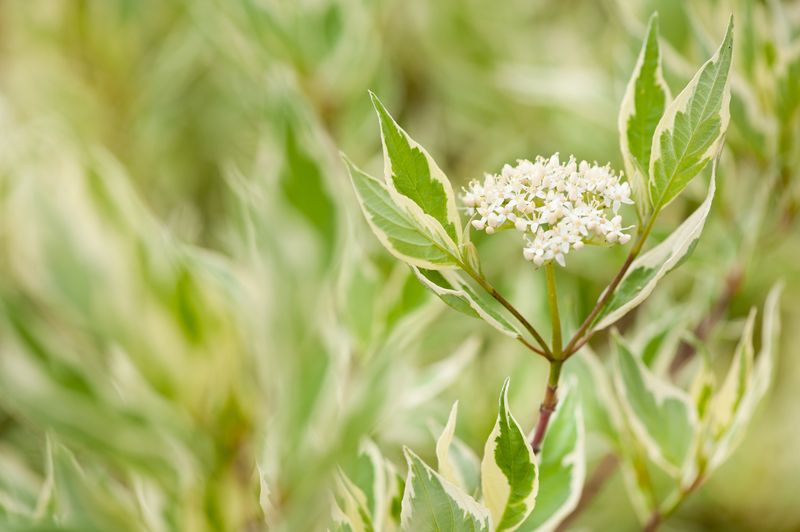Exploring the Essence of Container Gardening
Posted on 25/09/2025
Exploring the Essence of Container Gardening
Container gardening has ignited the imagination and practical spirit of gardeners worldwide. With its adaptability, compactness, and creative latitude, it serves as a beacon for urban dwellers, beginners, and seasoned horticulturists alike. In this comprehensive guide, we explore the essence of container gardening -- unveiling its benefits, essential techniques, plant combinations, and troubleshooting strategies -- helping you thrive in your journey to cultivate a vibrant oasis, no matter how much space you have.

What is Container Gardening?
At its core, container gardening is the art of growing plants in pots, boxes, or other containers rather than planting directly in the ground. This technique enables gardeners to nurture flora on balconies, patios, windowsills, rooftops, or even indoors. Whether you have a sprawling backyard or a tiny apartment, growing plants in containers makes gardening accessible to virtually everyone.
The Rise of Pot Gardening
Urbanization and limited living spaces have fueled the popularity of pot gardening. According to horticultural studies, containerized gardens enable efficient use of available space, while offering maximum aesthetic and practical returns. It's not just about the flowers or vegetables; it's about creating a harmonious living environment, reconnecting with nature, and expressing personal creativity -- all within manageable bounds.
Benefits of Container Gardening
- Space Flexibility: Ideal for urban settings, balconies, decks, or small yards.
- Mobility: Containers can be moved to adjust for sunlight, extreme weather, or design preferences.
- Soil Control: Allows for optimal soil selection and mixing, crucial for specialized plants.
- Pest and Disease Management: Isolating plants helps in preventing and managing many common issues found in in-ground gardens.
- Accessible Gardening: Perfect for people with limited mobility, as containers can be elevated for ease of access.
- Aesthetic Appeal: Pots and planters come in diverse styles, colors, and materials, enhancing both indoor and outdoor spaces.
- Year-Round Growing: Moving containers indoors or to sheltered areas can extend growing seasons.
Essentials for a Successful Container Garden
Delving into container gardening basics ensures a lush, thriving container ecosystem. From choosing the right container to matching plant species, every decision impacts growth and beauty.
Choosing the Right Containers
- Material: Clay and terracotta are breathable, but dry out quickly. Plastic and resin are lightweight and retain moisture, while metal and wood offer aesthetic flexibility.
- Size: Larger containers retain moisture better and provide space for root growth. Consider mature plant size and desired arrangement.
- Drainage: Ensure every pot has sufficient drainage holes to prevent waterlogging, which can lead to root rot and fungal diseases.
Soil Mixes for Healthy Plants
Avoid using garden soil directly in your containers as it may be too dense and could harbor pests. Instead, opt for a high-quality potting mix designed for containers. Add organic matter such as compost, peat moss, or coconut coir to improve nutrient content and water retention. For specific plant types such as succulents or orchids, seek specialized soil blends.
Understanding Light and Placement
Successful container gardening is influenced by the availability of sunlight:
- Full Sun: 6+ hours of direct sunlight - ideal for most vegetables and flowering annuals.
- Partial Sun/Shade: 3-6 hours - suitable for herbs, leafy greens, and many perennials.
- Shade: Under 3 hours - ferns, impatiens, and select houseplants flourish here.
Consider moving containers during the season to provide optimum exposure, or using mobile plant stands to change locations as needed.
Best Plants for Container Gardening
The world of container gardening plants is diverse. You can grow virtually anything, but some species are particularly well-suited for pot cultivation.
- Herbs: Basil, parsley, thyme, mint, chives, oregano, and rosemary thrive in containers on a sunny windowsill or patio.
- Vegetables: Tomatoes, peppers, lettuce, radishes, carrots, and bush beans are compact and productive.
- Flowers: Petunias, pansies, geraniums, marigolds, begonias, and dwarf dahlias offer color and fragrance.
- Fruits: Dwarf citrus trees, strawberries, blueberries, and even figs can be cultivated in appropriately sized pots.
- Houseplants & Foliage: Snake plants, pothos, philodendrons, spider plants, and succulents are stylish choices for indoor pots.
- Climbing Plants: Use trellises inside containers for climbing peas, beans, or flowering vines like morning glories and sweet peas.
Designing a Container Garden: Combination and Color
One of the most creative aspects of container gardening is the ability to combine different textures, heights, and shades in a single pot. Professional gardeners often follow the "thriller, filler, spiller" formula:
- Thriller: A tall, attention-grabbing plant at the center or back.
- Filler: Bushier or mound-forming plants to fill the body of the arrangement.
- Spiller: Cascading or trailing plants draped over the edge of the container.
Pay attention to color harmony, leaf shapes, and seasonal changes. A successful container garden is as much a work of art as a living system!
Essential Care & Maintenance Tips for Potted Plants
Pot gardening requires consistent care. The enclosed space of a container means plants depend on you for all their needs.
Watering
- Check moisture levels daily, especially in warm months. Stick your finger into the soil an inch below the surface -- if dry, it's time to water.
- Avoid overwatering, as pots with insufficient drainage can quickly lead to root rot.
- Self-watering containers and mulches can help maintain consistent soil moisture.
Fertilizing
- Container-grown plants exhaust their limited soil's nutrients quickly.
- Use a balanced, slow-release fertilizer or liquid feed according to specific plant requirements.
- Be cautious with dosage to prevent fertilizer burn -- always follow label instructions.
Pruning and Deadheading
- Regularly remove faded flowers and damaged leaves to promote healthy new growth.
- Pinching back herbs and annuals encourages bushiness and prolongs blooming.
Repotting and Refreshing Soil
- Most perennials and larger plants benefit from repotting every 1-2 years to prevent root binding.
- Replace or refresh potting mix annually to replenish nutrients and improve soil structure.
Common Challenges in Container Gardening (and Solutions)
- Wilting Leaves: Can be due to underwatering, overwatering, or rootbound plants. Check moisture and roots, and adjust care or repot if needed.
- Leggy or Weak Growth: Usually a sign of insufficient light. Move containers to a brighter spot or consider grow lights for indoor gardening.
- Pests: Aphids, spider mites, and whiteflies are common. Use insecticidal soap, encourage natural predators, or gently wash leaves.
- Yellow Leaves: Often caused by nutrient deficiencies or overwatering. Ensure proper soil nutrition and watering routines.
- Containers Drying Out Too Fast: Choose larger pots, use water-retentive mixes, and group pots together to create a humid microclimate.
Seasonal Container Gardening: Year-Round Beauty
Container gardening isn't just for summer. With a little planning, you can enjoy thriving pots through every season.
- Spring: Plant cool-season annuals like pansies, violas, snapdragons, and early vegetables.
- Summer: Showcase heat-loving flowers and vegetables. Water more frequently and fertilize to maintain vigor.
- Autumn: Swap summer-bloomers with mums, ornamental cabbages, or asters. Add decorative gourds and pumpkins.
- Winter: Use evergreen plants, dwarf conifers, winterberry, or bright stems like dogwood for interest. Move sensitive pots to sheltered spots or indoors.
Sustainable and Eco-Friendly Pot Gardening
- Reuse and Upcycle: Repurpose old buckets, crates, or tin cans into planters.
- Conserve Water: Use mulch and water-retaining gels, and collect rainwater for irrigation.
- Organic Practices: Choose organic fertilizers, peat-free soil mixes, and pollinator-friendly plants.
- Composting: Add kitchen scraps to your container garden soil to enrich nutrient content and reduce waste.
Creative Container Ideas and Inspiration
The beauty of container gardening lies in its boundless creativity. Here are some unique ideas to ignite your design muse:
- Vertical Gardens: Stack pots or use wall-mountable planters for herbs, strawberries, or succulents.
- Windowsill Herb Gardens: Fresh basil, thyme, and mint mere inches from your kitchen.
- Color-Coordinated Displays: Use pots and plant palettes that match your decor or evoke seasonal moods.
- Patio Fruit Trees: Dwarf lemons or olives in large tubs for a Mediterranean vibe.
- Child-Friendly Mini Gardens: Invite little ones to plant and care for their own 'fairy garden' in a repurposed toy bin.

Getting Started: A Step-by-Step Container Gardening Guide
- Choose a Suitable Container: Big enough for plant growth and drainage.
- Add a Quality Potting Mix: Leave several centimeters at the top for watering.
- Pick Your Plants: Consider sun needs, plant heights, and companions.
- Arrange and Plant: Place taller plants in the center or back, fillers around, and spillers at the edge.
- Water Thoroughly: Saturate soil and let excess water drain.
- Place for Optimal Light: Monitor sun exposure and adjust as needed.
- Maintain Consistent Care: Water, feed, and remove dead growth regularly.
Conclusion: Embracing the Art of Container Gardening
Container gardening is more than a method -- it is a lifestyle choice that brings nature closer, no matter your living situation. Its true essence lies in its flexible potential, sustainable practices, and the joy it sparks as you nurture, create, and harvest. Whether you're seeking lush flowers, fresh produce, or an inviting green haven, potted plant gardening offers endless possibilities for transformation and personal expression. Roll up your sleeves, pick up that trowel, and step into the boundless world of container gardening today!

